The importance and norms of applying mineral fertilizers on the site

Very often, supporters of natural conditions for growing vegetables, fruits, and berries believe that the use of various “chemical” substances can harm human health and do not add fertilizers to the soil. Let's try to figure out how right they are and whether it is possible to harm the crop if you adhere to the norm for applying minerals. fertilizers. And also what consequences does a lack of nutrients have for plants?
Content:
- Why does a plant need minerals?
- Types of mineral fertilizers
- Norms for applying mineral fertilizers to the soil
Why does a plant need minerals?
Plants are living representatives of nature that belong to producing organisms. Perhaps someone remembers from a biology course that producers are capable of so-called autotrophic nutrition. Its basic principle is the natural process of converting non-living minerals into organic compounds. If such a synthesis occurs in a laboratory, then in addition to the inorganic elements themselves, energy is also needed.
In nature, the source of energy for plants is the sun, and the source of minerals is the soil. The solvent for them is water. Plants obtain some of their inorganic compounds from the surrounding air. To prevent the soil from becoming depleted, it needs to be regularly enriched with the necessary elements.
In the wild, the natural renewal of the earth's resources is sufficient. In cultivated crop production mineral More substances are required, since they are consumed much faster and in larger volumes. Indeed, in addition to increasing green mass, cultivated plants produce fruits and seeds in larger quantities than their wild relatives.

Therefore, agricultural lands require additional amounts of minerals available to plants. If they are not added to the soil, then at best the harvest will not be very large. In the worst case, the plants may become diseased and not produce a harvest at all. In severe cases, crops may be destroyed.
Therefore, the application of fertilizers is not only important, but also a necessary agrotechnical measure. If everything is done in accordance with application standards, then there will be no harm to human health from such products. The need for mineral nutrition in all crops is different, therefore, fertilizers containing mineral elements are different.
Types of mineral fertilizers
Vegetable, berry, and fruit crops require the following chemical elements:
- nitrogen
- molybdenum
- phosphorus
- manganese
- potassium
- magnesium
Mineral fertilizers can be divided into simple and complex. Separately, microfertilizers can be distinguished. Mineral fertilizers contain water-soluble salts of certain chemical elements. Simple fertilizers, their One-way or simple fertilizers may contain salts of one element:
- P - phosphorus
- N - nitrogen
- K - potassium
Video about the rate of application of mineral fertilizers:
Complex, or multilateral, fertilizers include two or more nutrients. Fertilizers are produced in chemical plants. Their products are:
- ammonium nitrate and urea, they contain nitrogen
- superphosphate, phosphorus flour and double superphosphate, they serve as a source of phosphorus
- potassium chloride is a source of potassium
Complex fertilizers contain two or three nutrients in one chemical compound. For example:
- ammophos, containing ammonium phosphate
- potassium nitrate is a nitrogen-potassium compound
There is also a method for producing complex fertilizers by mechanically mixing one-way fertilizers. This is also done in chemical plants. If we consider the application of fertilizers from the point of view of quantity, then it is more profitable and safer to apply complex fertilizers, since the application rates are significantly lower than when applying several simple mineral fertilizers.
Norms for applying mineral fertilizers to the soil
To accurately determine how much and what substances are missing in the ground and receive recommendations for their application, you need to take soil samples from the site to a special laboratory. This is the best way to calculate application rates depending on the individual condition of the land in a particular area.
In addition, the analysis will save you from unnecessary expenses on purchasing fertilizer and oversaturation of the crop with unnecessary chemicals. Also, application rates depend on the type of plant and the yield of a particular variety. There is such a thing as mineral removal.
Removal cannot be calculated without the general fertility of the land on the site. If phosphorus can be added 2 or 3 times more than the plant needs, potassium is one and a half times more than the norm, then this cannot be done with nitrogen.
It must be applied only in accordance with the application rates. Otherwise, there will be an undesirable increase in green mass and a decrease in yield.In addition, nitrogen can accumulate both in the green parts and in the fruits, berries, and vegetables themselves.
And the accumulation of nitrates and nitrites in excess of permissible concentrations causes harm health. Also, when calculating fertilizer application rates per 1 sq. meter, you need to take into account the concentration of the main substance in the fertilizer. Based on the above, we can conclude that calculating the application rate will require knowledge of chemistry and mathematics.
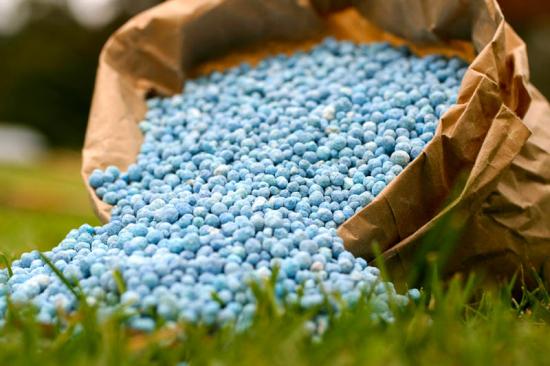
In order not to harm the plants, the rate and method of applying mineral fertilizers for a particular crop can be found either on the package with the fertilizer or on the package with the seeds, where there are also sometimes appropriate recommendations. Modern industry produces a sufficient amount of new mineral fertilizers that satisfy all the needs of plants for inorganic substances.
These are the following complex mixtures for liquid and dry fertilizers:
- Kemira luxury
- Effect A
- NPK effect
- All types of Agricola
- Floretta sticks 1
- Victoria sticks
Maintain the application rates specified in the instructions for the mineral fertilizer and grow safe and rich harvest.

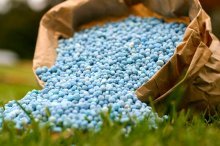
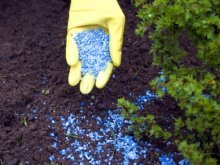
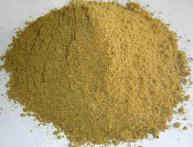


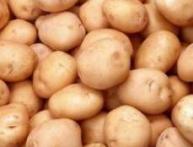

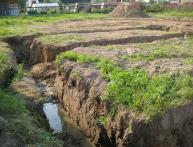
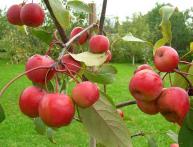

Comments
We fertilize the garden with various mineral fertilizers. First, in order for the plants and seedlings to grow, we water them with a solution of nitrogen fertilizer, and then, when the fruits begin to appear, we use ammophosphate complex fertilizer.